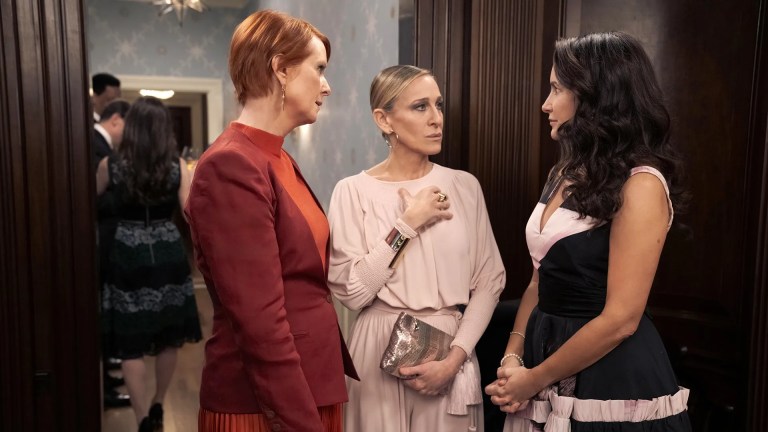
The Evolution of A Typical Long-Term Monogamous Relationship
Such moments become fiercely guarded, protected and cherished memories and subsequently, the recall of such memories is often the precursor to small mental breakdowns, large mental breakdowns, and evolution-of-a-relationship montages in movies, specifically circa 1980 and 1990.
Prehistory
In many long-term relationships one often comes to perceive his life as happening “before” and “after” he met his partner. Prehistory is the “before.” Prehistory can take many different forms: divorced, widowed, single and depressed, single and highly promiscuous, celebrity, washed-out celebrity, recovering drug addict, etc.
First Contact
Lovers often remember the first time they saw each other. This can happen many years before the actual “hook up” to mere minutes before the “hook up.” First contact can also happen virtually: a profile photograph on a dating website or a poem read on an internet literary magazine. First contact does not necessarily happen in tandem; often one person is unknowingly under the watchful eyes of the other until the watcher reveals herself. First contact does not necessarily immediately lead to romantic interaction.
The Realization That Some Kind of Romantic Interaction is an Option
This phase is often made null by the concept of blind dating, matchmaking and internet dating but will be included in this piece for the purpose of comprehensiveness. Often a pre-hookup couple exists for some amount of time in a state of being where for some reason hooking up simply hasn’t been considered. The turning point occurs almost randomly but is later seen as a moment of significance and magic. Some have identified the Roman god Cupid as having a hand in such moments, describing some variation of the long-lived expression “shot by Cupid’s arrow” or “cupid’s arrow came out of the sky” or whatever – a metaphor for the seemingly coincidental and almost absurd, esoteric and arbitrary nature of moments in which a relationship can change from friendly to romantic. Such moments become fiercely guarded, protected and cherished memories and subsequently, the recall of such memories is often the precursor to small mental breakdowns, large mental breakdowns, and evolution-of-a-relationship montages in movies, specifically circa 1980 and 1990.
Courtship
Courtship occurs when both parties are aware that a romantic interaction is possible and further both parties are open and actively engaging in the exploration of said possibility. While it is traditionally the role of the masculine party to commence courtship, it is the author’s belief that the feminine party plays a role of equal significance in the commencement of courtship, such that the feminine party must display the appropriate and subtle hints of encouragement and interest in order to push the masculine party into such mating displays. A very exciting period for two involved, courtship progresses first from a small hint of mutual interest to a certain breaking point. The period between these two points is constantly, almost bafflingly unsure of itself – parties often move haltingly, with many unspoken misunderstandings and mixed signals.
The Breaking Point
Also known as (and quite literally) “the first kiss,” the breaking point is the physical manifestation or some might say “spoils” of courtship wherein one party involved becomes courageous enough to cross the abstract threshold of doubt and apprehension to meet the other with his mouth. The breaking point typically becomes a cherished memory unless it’s occurred under the influence of alcohol (a common situation, as wine and spirits are often thought of as a “social lubricant”), in which case memory consolidation is impaired and gaps are replaced with whimsy.
Frenetic Vacation Period
Lasting anywhere from two weeks to six months, the frenetic vacation period is characterized by behavior that’s consciously shortsighted, spontaneous and reckless, usually in the interest of extracting as much pleasure from both parties’ seemingly endless well of affection, excitement and infatuation with each other. Described by the common man as “falling in love,” the frenetic vacation period is full of promises, the fulfillment of sexual fantasies, and ultimately, behavior that’s expected to last forever but to both parties’ dismay does not.
Reality
The encroachment of reality on a relationship marks the end of the frenetic vacation period and the beginning of one which is less exciting, more sustainable and “deeper.” From this point, long-term monogamous relationships can go one of two ways: “deep dissatisfaction” or “contentedness.”
Parties in a relationship become deeply dissatisfied in the case that the relationship’s initial idealism and promises are dropped as the reality phase set in. The loss of ideals or the realization that the images the couples had of each other were only temporary is made worse by an accompanying breakdown in communication, which only serves to exacerbate dissatisfaction as well as create estrangement, loneliness and alienation. These feelings themselves then go on to further separate the couple’s agendas and intimacy, in a downward spiral that can only really be broken by a reupping of “as-honest-as-possible” communication and a strict adherence to the strategy as the relationship progresses.
Likewise, long-term monogamous relationships can go the “contentedness” way if “as-honest-as-possible” communication is genuinely believed-in and trusted by both parties to be an effective method of problem solving and righting misunderstanding. Such communication allows each party to constantly evaluate the known facts of the relationship and make informed, secure decisions regarding how to move forward. Unlike couples that are deeply dissatisfied and communicate on the basis of unknown-to-each-other beliefs and rules, content couples almost-literally exist on the same level and as such can openly reinforce and actually choose agendas that enhance the quality of their relationships.
Deeply Dissatisfied Couples: The Fall
Once communication has broken down the deeply dissatisfied couple will become increasingly estranged moving forward. Deeply dissatisfied couples often fight for reasons they don’t understand, have affairs, break up and get back together, have nervous breakdowns, and ultimately, either break-up, marry, have kids, have an affair, and divorce in the midst of mid-life crises, or stay together for their entire lives, alienated from each other in their houses but too afraid of the world outside of that context. The moment before they die, there’s often fear on their faces, because they realized that they could have done better. That they should have realized how fucked they were when they could have done something about it. Their significant others are often seen at their bedsides, offering the meager support only a stranger can offer.
Content Couples: The Rest of Their Lives
While difficulties are certainly not over or will ever end for content couples, they will move toward increasingly harmonious long- and short-term behaviors/interactions. Provided nothing traumatic happens, they will be mostly satisfied for the rest of their lives, whether or not they stay together. If they need to end their relationship they will – unceremoniously, calmly, sadly, and effectively – and both will continue to love and respect each other. In the case they remain together until death, we can only hope that they never find that something was missing the whole time. ![]()











